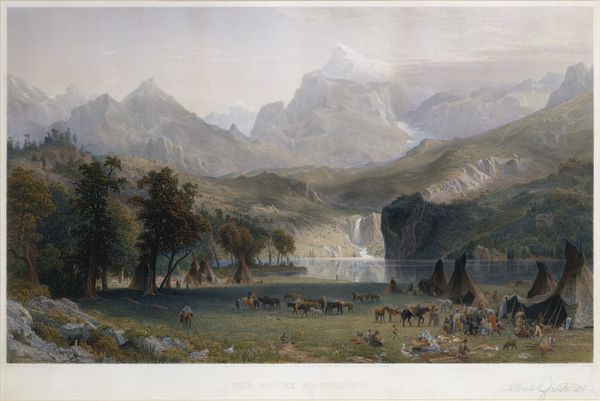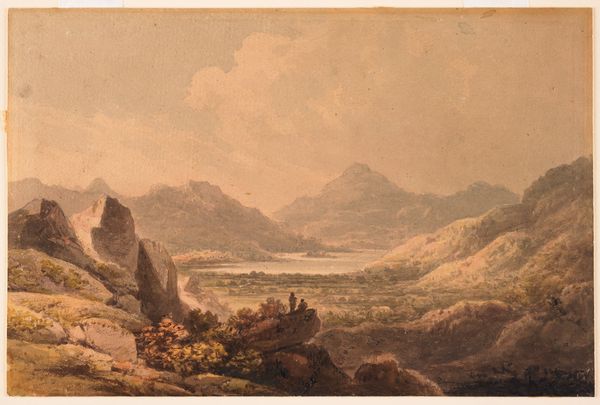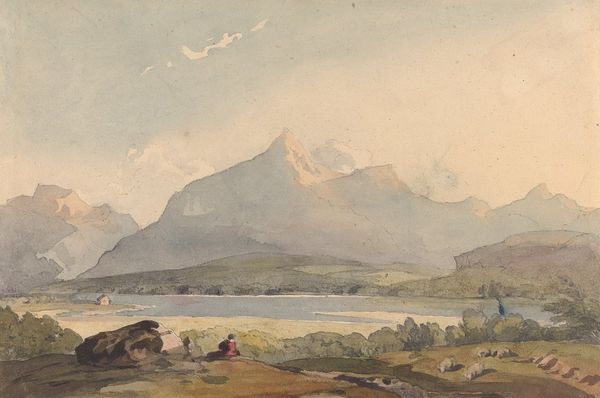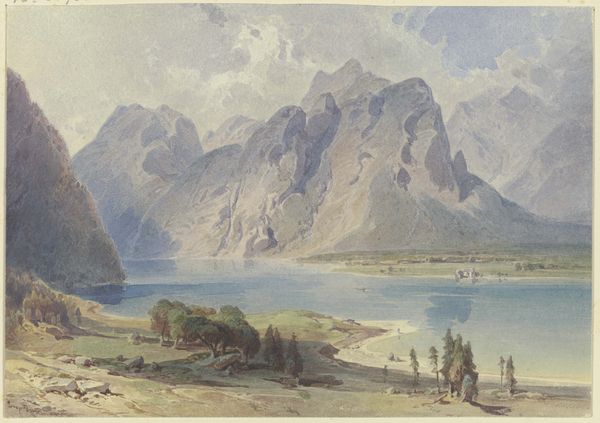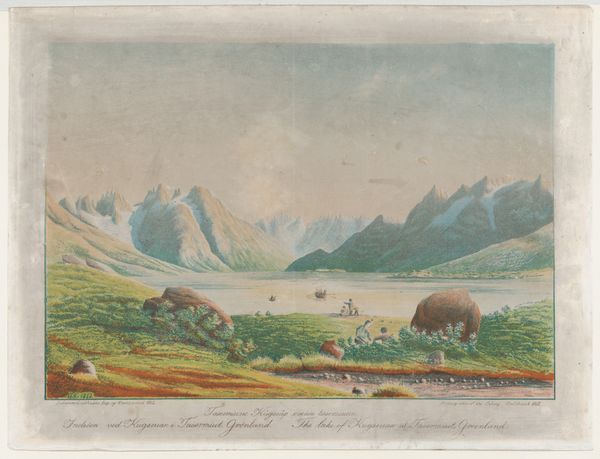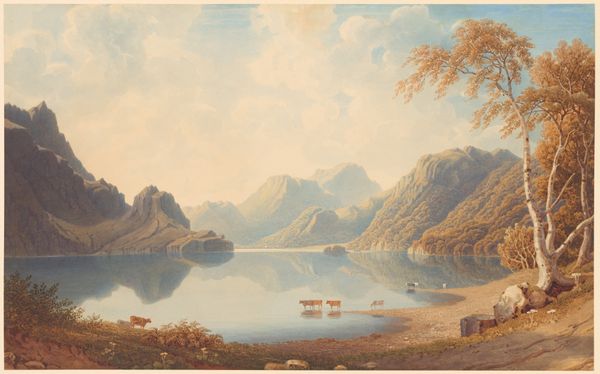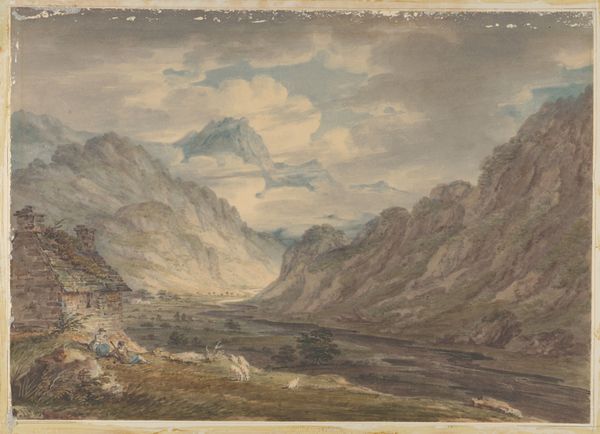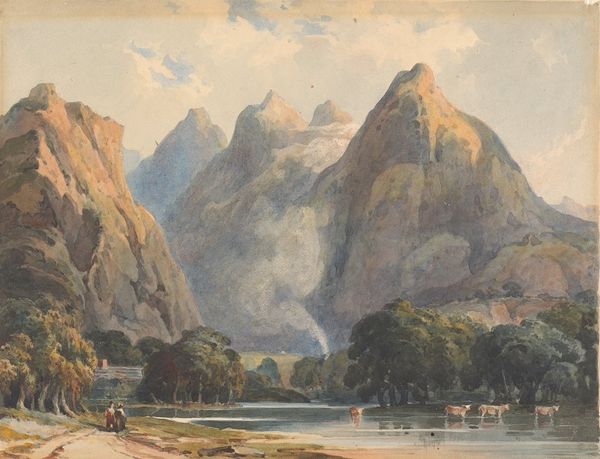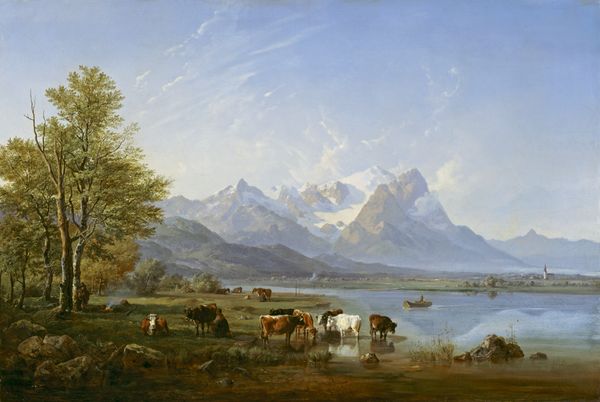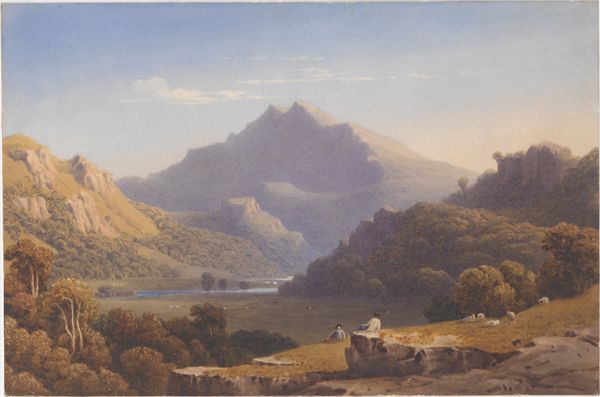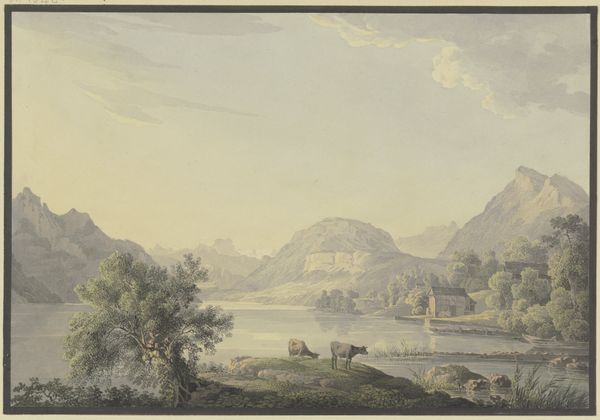
drawing, painting, watercolor
#
drawing
#
16_19th-century
#
painting
#
landscape
#
watercolor
#
romanticism
#
watercolor
Copyright: Public Domain
Curator: What a beautifully serene painting. This watercolor drawing, titled "At the Lake Lucerne," is by Leopold Rottmann and held here at the Städel Museum. Something about the cool palette just invites contemplation. What catches your eye? Editor: It’s so gentle! Almost overwhelmingly picturesque. I’m drawn to the composition: those majestic, slightly intimidating mountains presiding over an idyllic scene. The lone figure to the right... he looks like he's about to wander into a fable. I wonder about the people who are not included, and their relationship with the space in a wider landscape context. Curator: Absolutely. Rottmann had a real knack for capturing mood with watercolor. Romanticism, naturally, leaned toward idealizing nature, yet I feel a thread of genuine awe and connection in his renderings of light and atmosphere. Like he’s inviting you to breathe the mountain air. Editor: Yet there is also the problem of idealization in itself; this artistic focus may veil environmental concerns or the socio-political realities of land use, for instance, at this particular historical juncture. I’m drawn to unpack the layers of romanticized art and their actual repercussions. How do you see Rottmann engaging with such considerations? Curator: He perhaps gives space to consider these complexities simply through its style. His subtle washes and attention to detail do render this a particular view. It's almost as if, in showcasing this carefully crafted experience of beauty, Rottmann invites the viewer to notice how nature and experience, which may seem natural, are deeply intertwined. He brings this place to the human level; the composition of colors opens the world to new sensations. I want to be in his scene! Editor: That tension between invitation and exclusion—a gorgeous balancing act. As contemporary audiences engage with the picture today, in light of new material realities concerning class, labor, and representation, the relationship between nature, history and memory needs a different lens, especially as artworks become more visible and integrated within global conversations of environmental or social change. Curator: It becomes clear through these dialogues that experiencing a landscape—or any artwork for that matter—can bring with it an understanding of human identity and history. Every color and form tells us something. Editor: Exactly! Art’s power comes from encouraging that reflection. Perhaps a little uncomfortable questioning, too. Now I'm keen to check the other romantic artworks in this wing, through the lenses of my insights.
Comments
No comments
Be the first to comment and join the conversation on the ultimate creative platform.
